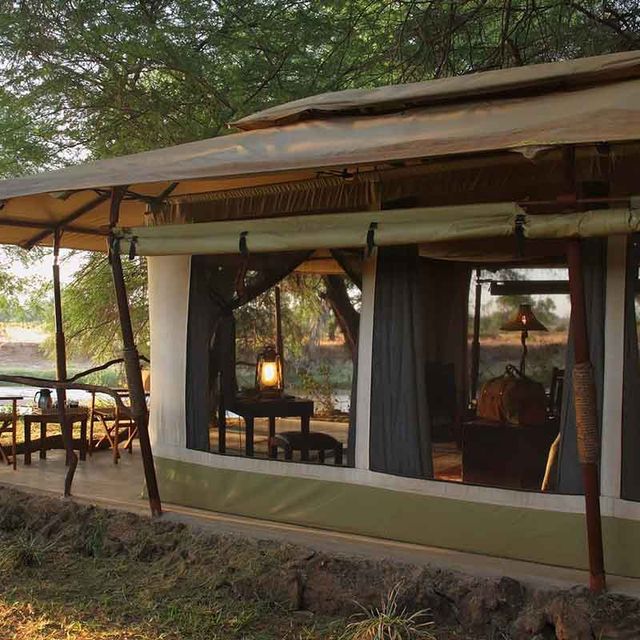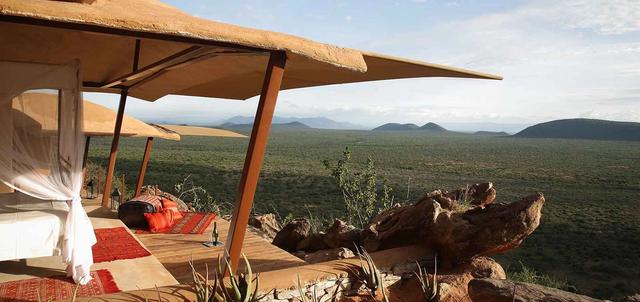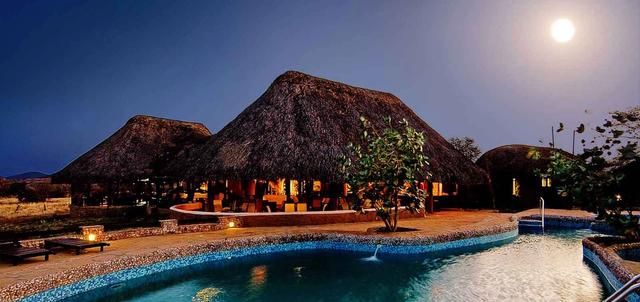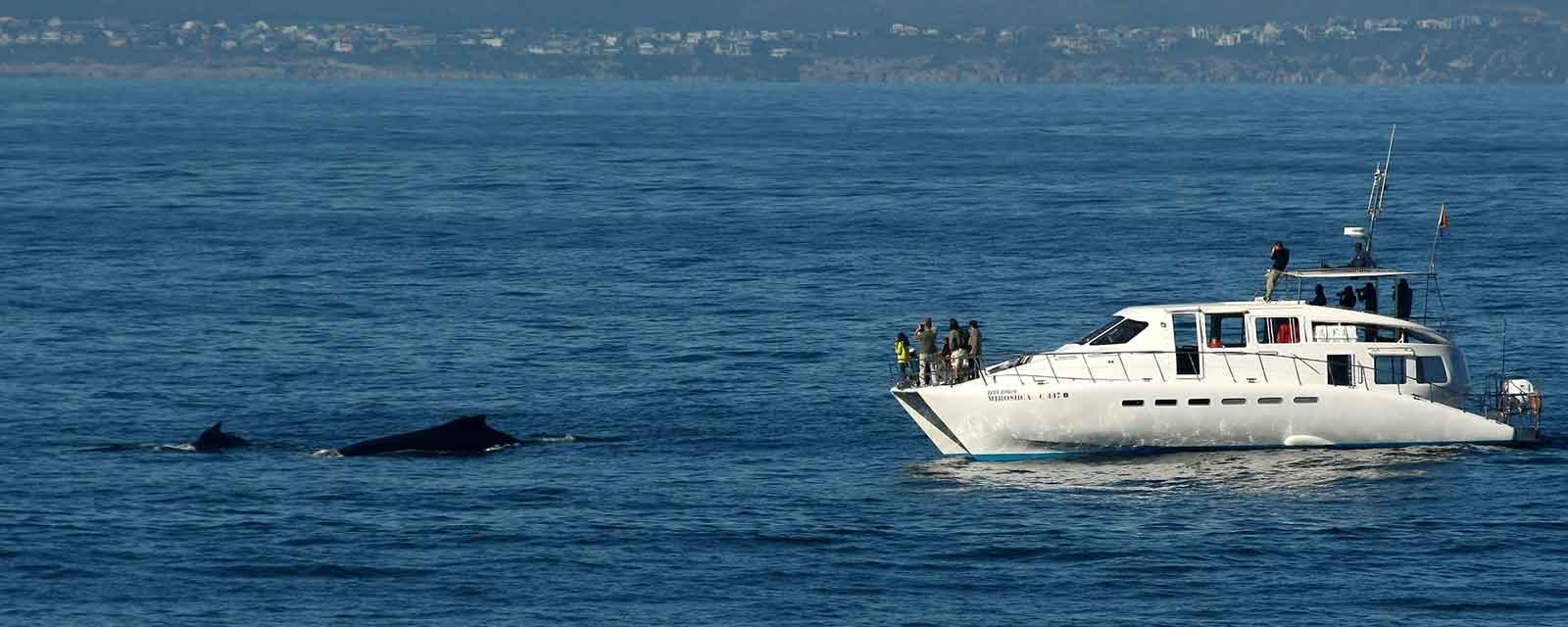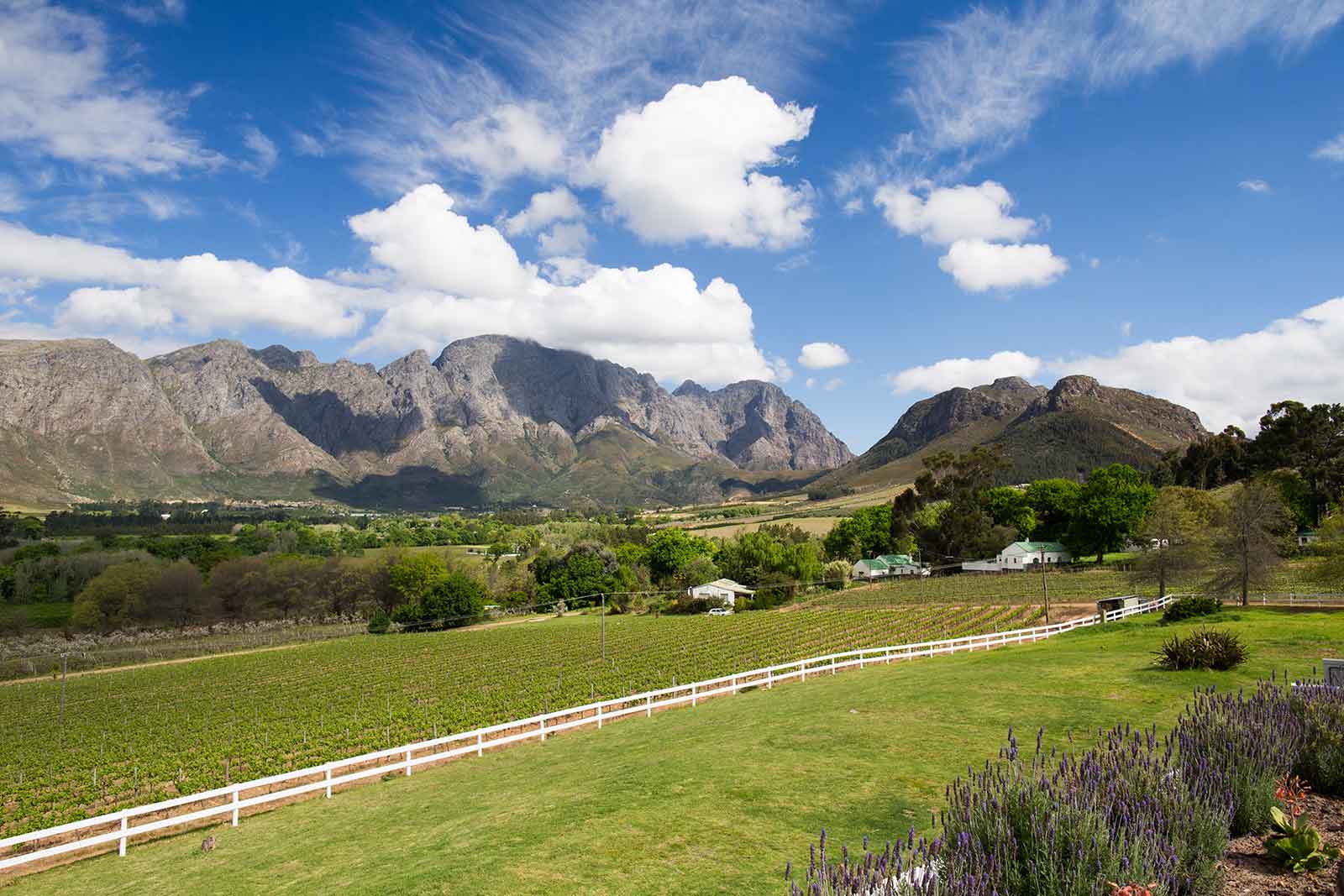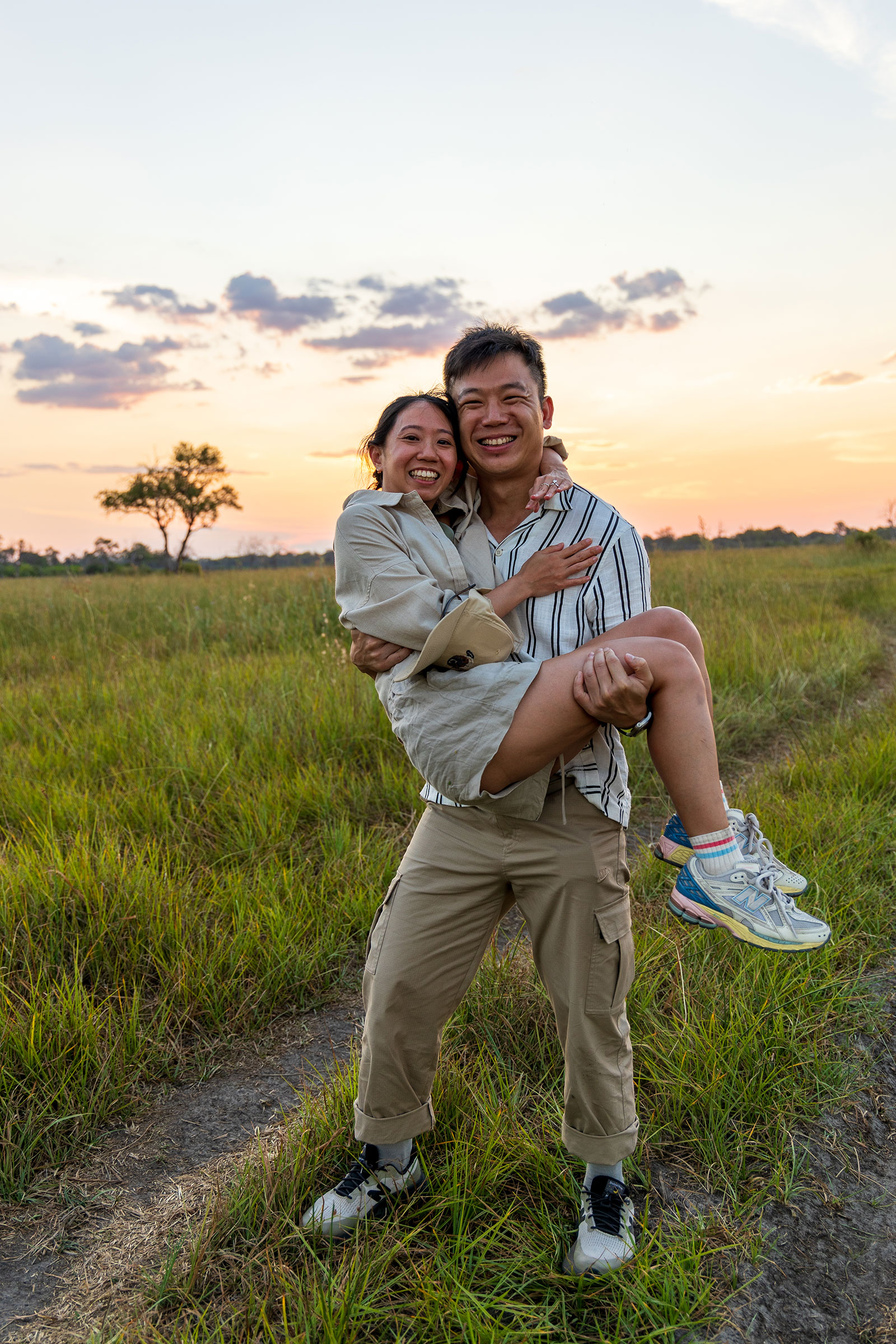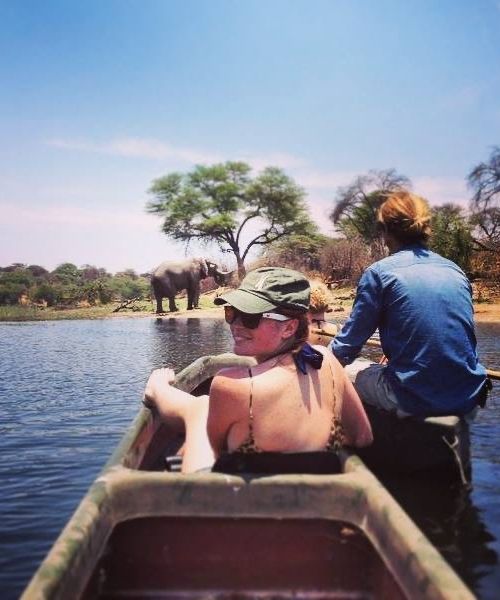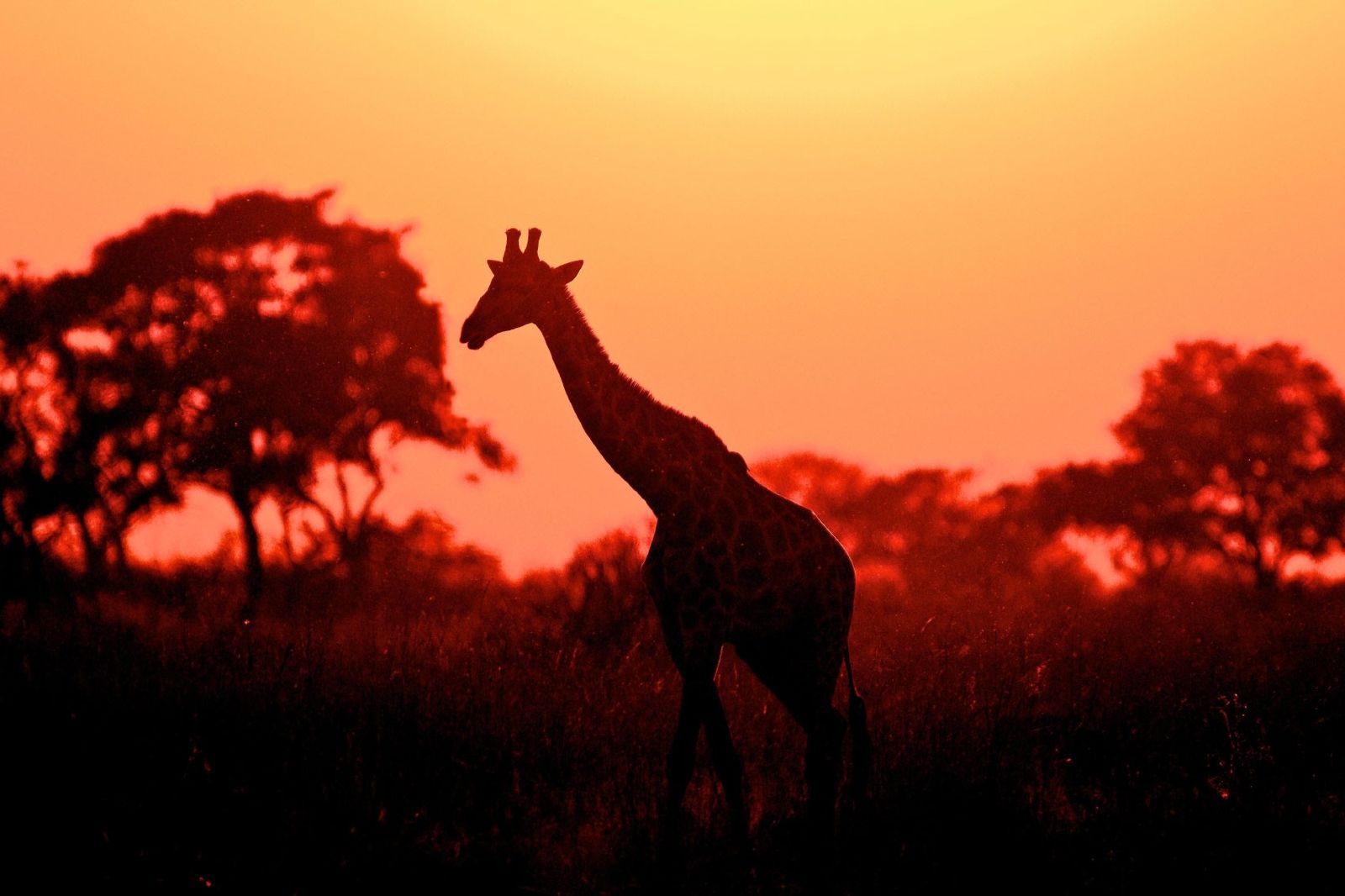
Samburu National Reserve
Located on the southern bank of the northern Ewaso Ngiro River, Samburu is home to a large population of Nile crocodiles and is the second most visited game reserve in Kenya. Visitors to Samburu have the opportunity to see some rare wildlife species.
Samburu National Reserve Highlights
Samburu National Reserve is a rugged and semi-desert park located in Samburu district in the Rift Valley Province in central Kenya. The park neighbors the homes of the Samburu tribe of Kenya, a tribe known for their remote culture, pastoral and nomadic way of life.
Samburu National Reserve consists of a low lying, semi arid plain on the southern bank of the northern Ewaso Ngiro River. The reserve which lies 9km east of Buffalo Springs National Reserve was gazetted in 1974. The beautiful stark landscape is dominated by Samburu Hill in the south, at the foot of which is a rugged area with steep ravines.
The Ewaso Nyiro River is the lifeline of the area. Crocodile and hippo share the river with many small herds of elephant who bathe and frolic in the muddy brown waters during the heat of the day, before returning later to browse the lush vegetation of the riverine forest.
Due to its remote nature, Samburu has become the preferred game reserve for tourists looking for a quieter safari with fewer game vehicles; however, it receives the second-highest number of visitors after the Masai Mara.
The Samburu people live on the outskirts of the reserve in rural villages that surivive primarily off the land. There is a lot of cultural interest at these villages and guests are given the opportunity to visit as a part of day-trip activities.
This is one of 2 reserves where researchers and conservationists, Joy and George Adamson, became famous for raising lioness, Elsa. Their story was protrayed in the well-known book, Born Free.
The months of December through March and July through October are dry, making them by far the best months to visit. This is the period when large numbers of elephants and predators alike flock to the Ewaso Ngiro River.
Samburu Intrepids which is a luxury tented camp on the banks of the Uaso Nyiro River within the reserve.
For those who are looking for a relaxing safari experience rather than a 'tick the box' we would highly reccommend. Saruni Samburu Lodge . This is situated 45 min drive from the reserve, but is a stylish intimate and relaxed lodge in a spectacular location with breathtaking views of Northern Kenya and the snow-covered Mount Kenya.
How to Get There
Guests travelling to Kenya for a game-viewing holiday will opt for either a ‘fly-in-fly’ or a ‘fly-in-drive’ safari, which will determine whether they make use of air or road transfers to get to their destination.
All guests will enter Kenya at Jomo Kenyatta International Airport in Nairobi, the capital city. This airport is the travel portal for Kenya and can get very busy, so guests will often continue with their domestic flights from Wilson airport, which is 18km away.
Depending on the safari destination, guests will either connect with a charter flight from Wilson or Jomo Kenyatta airports to the reserve, or they will embark on a road journey from Nairobi to the reserve.
To get to Samburu National Reserve, guests will take a scheduled flight from Nairobi to Samburu. From the airstrip, guests will connect with a road transfer to the lodge.
Samburu Reserve Game Viewing and Activities
Samburu National Reserve is the best place to view several endemic Northern species including the long necked gerenuk, reticulated giraffe, Grevy's zebra and Beisa oryx. Buffalo, cheetah, leopard, lion and plains game can be found in the reserve. On rare occasions, packs of African wild dogs are sighted passing through the reserve.
The reserve is considered a bird viewing paradise by ornithologists. The forests along the river banks are home to many species of bird including the Palm Nut vulture, Vinaceous dove, blue-legged Somali ostrich, and numerous weaver birds. Poaching has completely wiped out the rhino herds however Samburu is visited by large herds of elephant, drawn by the promise of water.
In the dry season the elephants use their tusks to dig into the dry river beds, unearthing precious water. There are several private sanctuaries around the reserve that work closely with the Samburu people to protect both their tribal lands and the local wildlife. These sanctuaries are open to guests and are worth visiting for those interested in the Samburu culture.
